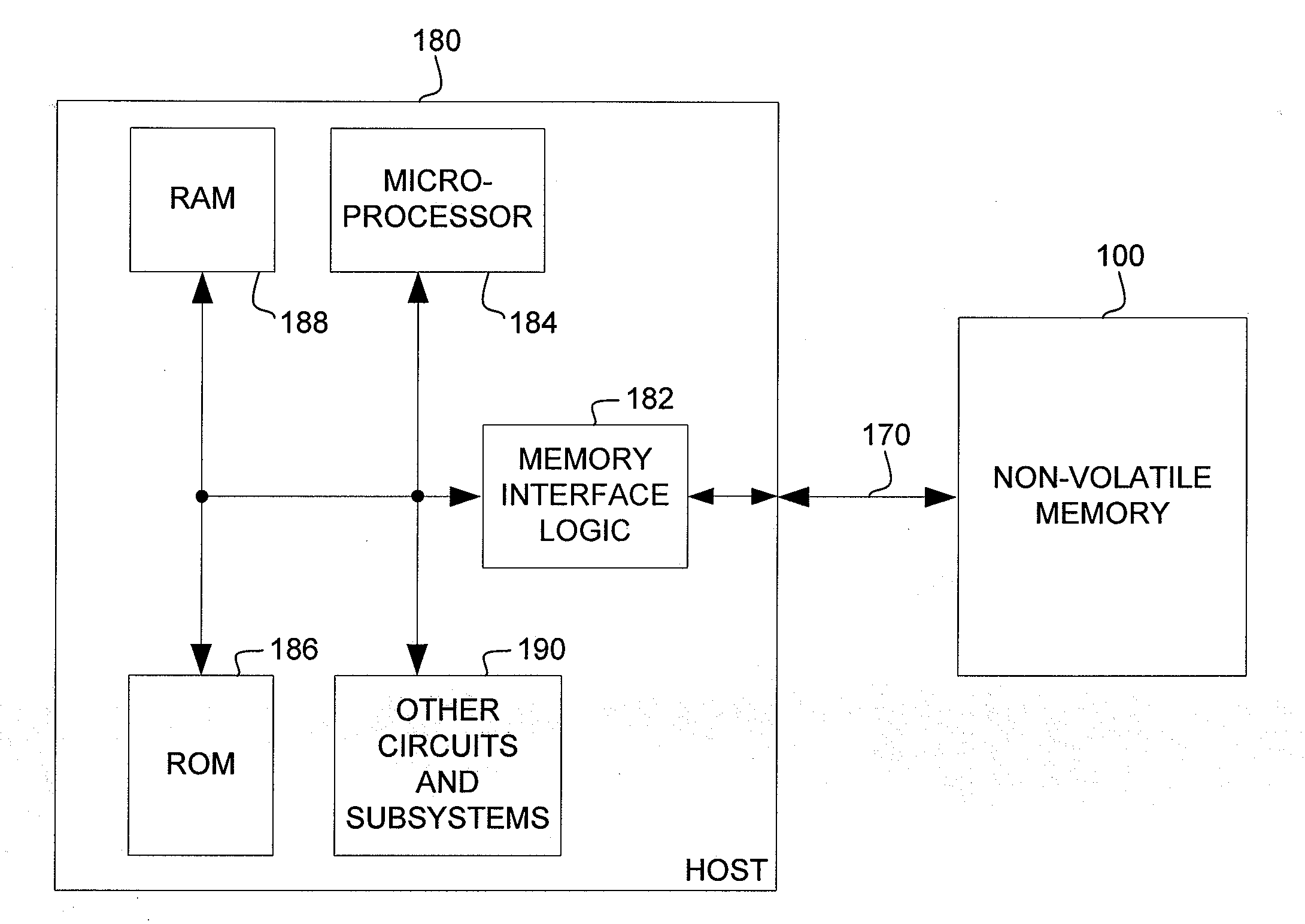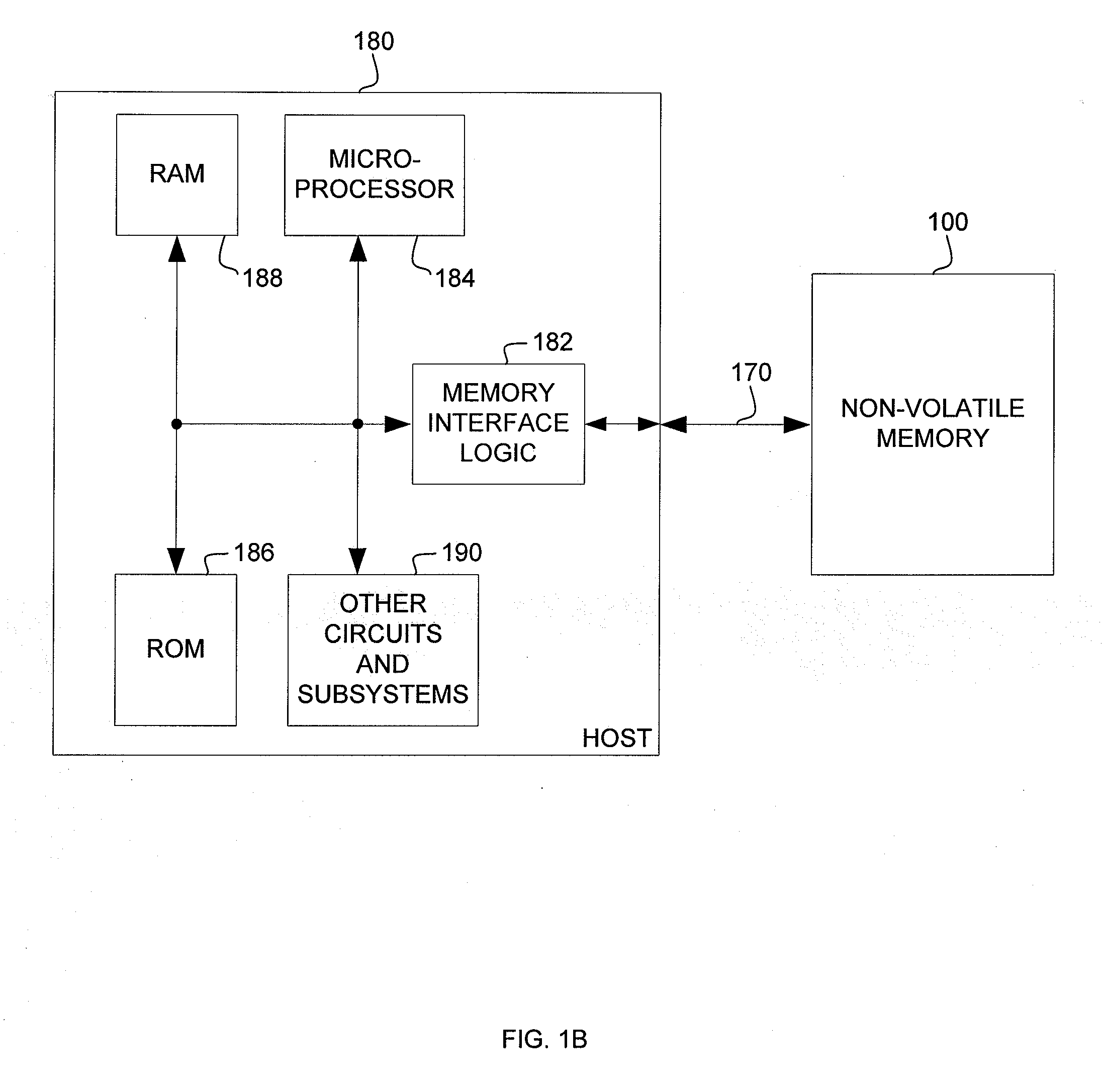Method And System For Virtual Fast Access Non-Volatile RAM
a non-volatile, fast access technology, applied in the direction of memory adressing/allocation/relocation, instruments, computing, etc., can solve the problems of erroneous data to be read, memory cells becoming less reliable, storage levels may shift, etc., to achieve fast read and write access
- Summary
- Abstract
- Description
- Claims
- Application Information
AI Technical Summary
Benefits of technology
Problems solved by technology
Method used
Image
Examples
Embodiment Construction
[0044]Memory cells of a typical flash EEPROM may be divided into discrete physical blocks of cells that are erased together (a block). That is, the block is the erase unit, a minimum number of cells that are simultaneously erasable. Each block typically contains one or more pages of data, the page being the minimum unit of programming and reading, although more than one page may be programmed or read in parallel in different planes or portions of the memory. A page typically stores one or more sectors of data, the size of the sector being defined by the host system. An example sector includes 512 bytes of user data, following a standard established with magnetic disk drives, plus a plurality of bytes of overhead information about the user data and / or the block in which the sector is stored. In another example, a page stores a plurality of bytes of overhead data, and one or more sectors of data, where a sector includes 512 bytes of user data. A sector may also be defined to comprise ...
PUM
 Login to View More
Login to View More Abstract
Description
Claims
Application Information
 Login to View More
Login to View More - R&D
- Intellectual Property
- Life Sciences
- Materials
- Tech Scout
- Unparalleled Data Quality
- Higher Quality Content
- 60% Fewer Hallucinations
Browse by: Latest US Patents, China's latest patents, Technical Efficacy Thesaurus, Application Domain, Technology Topic, Popular Technical Reports.
© 2025 PatSnap. All rights reserved.Legal|Privacy policy|Modern Slavery Act Transparency Statement|Sitemap|About US| Contact US: help@patsnap.com



